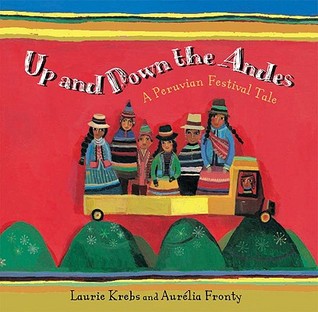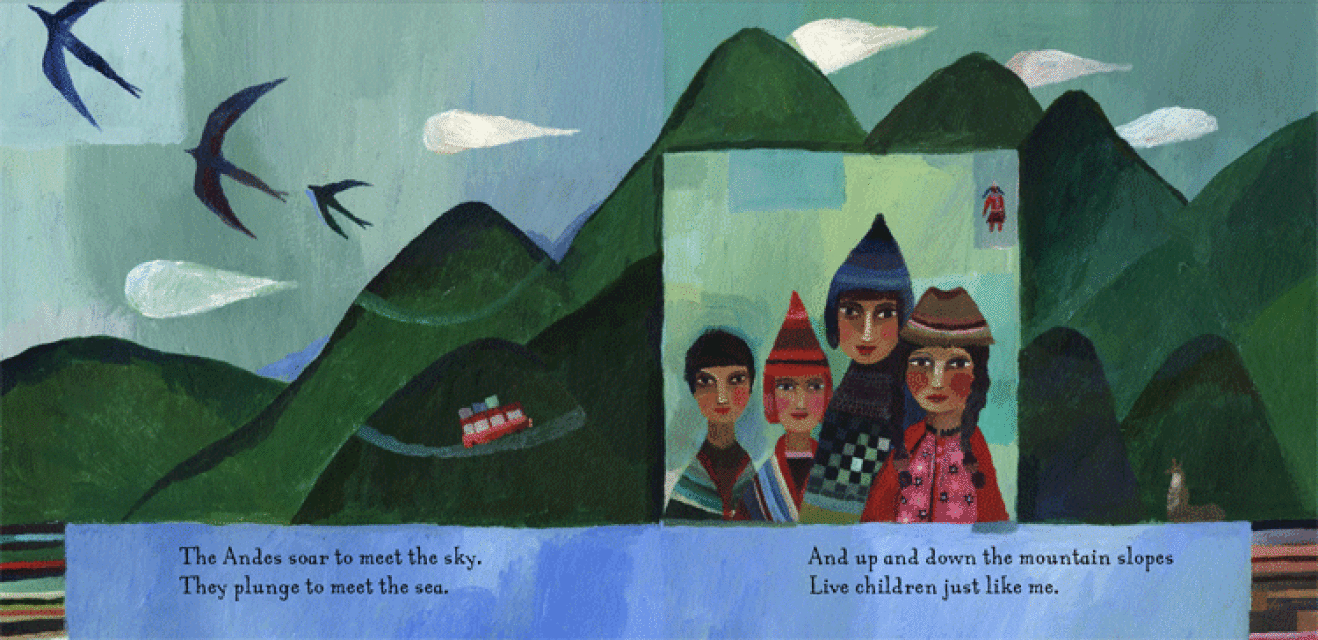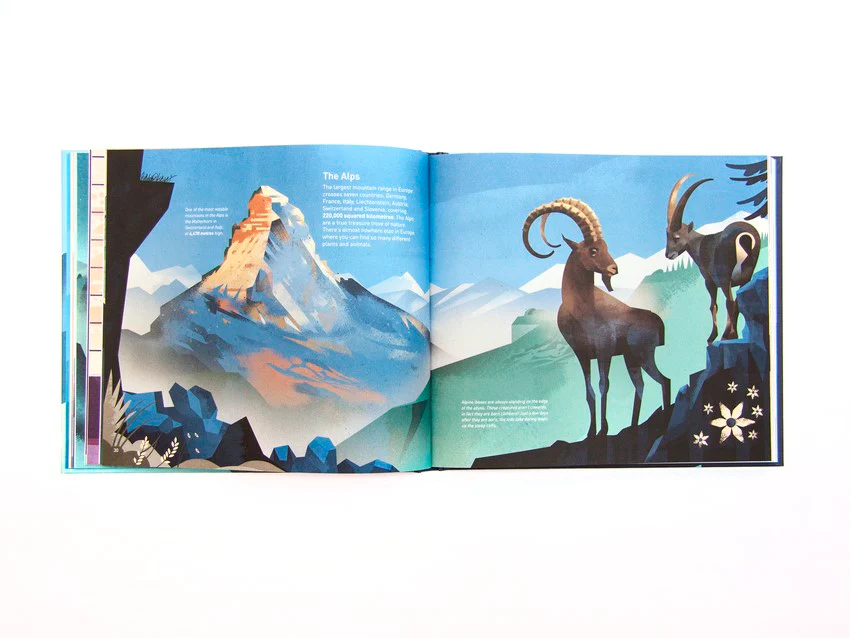to see what we could see!
So, we love mountains, forests, hiking, and camping, and our road trip this past June was all about exploring and taking the kids to see things they hadn't seen. That meant the Redwoods, all the way on the Pacific Coast, but it also meant crossing and driving past some of the country's amazing mountains. Our family has spent a great deal of time in the Appalachian Mountains, the oldest mountains in North America, over the years. However, it's been a long time since my husband and I saw the Rocky Mountains, the highest mountains in North America, or the Cascades or the Coast Range, and our children have never visited them. Same goes for the Black Hills, which happen to be mountains as well despite their misnomer. They're just a smaller and shorter range than the others.
See if you can spot each mountain range on the maps:
Although we did not spend a great deal of time trekking on foot through the mountains (next trips!), we did get to drive through and see a great deal of mountainous terrain and we did stop and explore some. We touched on part of each of the ranges identified above, and marveled at them all. Oh, to have more time to spend with them! Each has a rich geological story as well as its own history of human events. Let's start with how mountains form because there's an awesome book in the list below that talks about it. Mountains don't just POOF! appear, at least not usually. They form as a result of movement in Earth's crust, or surface layer, over millions of years or more. Earth's crust is broken up into giant pieces called plates that roughly fit together but also are always moving. Most of the time, we can't feel that movement, which is called plate tectonics. Sometimes, like during an earthquake, we feel the plates rub up against each other. Here's a great video that explains the process for the Rockies:
I mentioned that the Appalachian Mountains are the oldest in the nation, but they're much shorter than the Rocky Mountains. The Rockies average more than 10,000 feet in height, with the highest peak topping 14,000 feet, while the Appalachians average more than 4,000 feet, with the highest topping 6,000 feet. Yet, the Appalachians started pushing up more than 300 million years ago. The Rockies began pushing up a mere 60 million years ago! So, shouldn't the Appalachians be higher, since they've arguably been growing longer? Nope! Because other forces beside plate tectonics are at work. There's also erosion, which is the wearing away of Earth's surface by wind and water over time. The Appalachians have been around longer than the Rockies so those forces have been working at eroding them a lot longer. That's also why the tops of the Appalachians have a blunter, smoother appearance than do the sharper, pointier peaks of the Rockies. Here's another video about the formation not only of the Appalachians but also of the Himalayas, the highest mountains in the world:
The Black Hills formed about 65 to 70 million years ago, around the same time as the Rockies, but they're much shorter, too, and cover a smaller area. The Rockies span about 3,000 miles roughly north to south across the western part of North America. The Appalachians stretch about 2,000 miles southeast to northeast across the eastern part of the continent. The Black Hills stretch only about 110 miles at their greatest length. Meanwhile, the Black Hills average more than 3, 000 feet high but the highest peak actually tops 7,000 feet, surpassing the highest Appalachian mountain. So, even though they're called hills, the Black Hills are most definitely mountains. They're also home to Mount Rushmore, a national memorial, and to the Crazy Horse Memorial, both massive sculptures carved into mountainsides in the Black Hills. Mount Rushmore has a complicated and controversial history.
Okay, I'm stretching long again, but one more informational topic. This one's about volcanoes, which are also mountains. On our journey, we passed by and stayed in the shadow of Mount Hood, a mighty volcanic mountain towering 11,250 feet and situated just 77 miles from Portland, the largest city in Oregon. In fact, in pictures, you can see the snowcapped volcano looming behind the city:
Impressive, huh? Take a look at those maps, too. Mount Hood is one of multiple volcanoes in the Pacific Northwest, which are part of a much longer chain of volcanoes that ring the Pacific Ocean, known by the dubious name of the Ring of Fire. So, how are volcanoes different from other mountains, and why? Well, they have explosive personalities, right? They can erupt and spew A LOT of ash and lava on the surrounding landscape. (Hence the name Ring of Fire.) That, like the formation of mountains, results from plate tectonics as well as other processes deep beneath Earth's surface.
Mount Hood last erupted in September 1865 but it's still an active volcano, meaning it's not quite dormant and has the potential to erupt again. That might sound scary, but Pacific Northwest volcanoes and their past volcanic activity are also, in large part, responsible for the rich landscape and fertile soil that surrounds them. They're a vital part of their environment's development. The land around volcanoes is often so good for farming that many people live and build cities near them, past and present, despite the hazards! Check out this video to learn more about the formation of volcanoes, the different kinds of mountains, and the ways people keep track of their activity:
Picture Books About Mountains (and Volcanoes)
Which brings me to the books about these massive and remarkable landforms.
First up, How to Make a Mountain: in Just 9 Simple Steps and Only 100 Million Years! by Amy Huntington and Nancy Lemon. We just read this one, and my kids loved the blending of narrative and nonfiction. This girl has a big job ahead of her, but she sticks with it and takes us all along on her geological adventure. Having taught middle school, I would use this book in higher grades to explain basic geological processes in a fun and illustrative way. (In my opinion, picture books make great entry points and discussion fodder for upper grades.)
Next up, my two new favorite books and one longstanding favorite about hiking. I can't say enough good about these three. My kids and I have enjoyed all the Henry books, in which Henry David Thoreau takes on new life as a mindful but adventurous bear, by D.B. Johnson. They're all wonderful, and Henry Climbs a Mountain is one of the best! Check out the whole series if you can find them. The Hiking Viking by Laura Gehl and Timothy Banks tells a similar tale of a Viking who chooses a different path (not unlike Hiccup in How to Train a Dragon, sans dragons) and makes the effort to bring his family and friends along and show them why. It's gorgeously illustrated and so much fun to read aloud! Finally, What Can You Do with a Rock? by Pat Zietlow Miller and Katie Kath should inspire any reader to get out, explore and appreciate the natural world around them. I hope so!
Something of a fable, we adore this simple story of a goat who claims a mountain and tries to make it his own ... and learns something fundamental in the process. The illustrations and light text in David Lucas's This Is My Rock are just delightful and make for a fun, quick read again and again. (Ahem, good for kids of all ages still learning how and why to share.)
On the nonfiction-based side of things, we have another journey with Laurie Krebs in Up and Down the Andes: A Peruvian Festival Tale, illustrated by Aurélia Fronty. Join a traveling band of children as they make their way by various modes of transportation through the Andes Mountains, the longest continental mountain range in the world, to the city of Cusco in Peru. Krebs' rhyming text makes for a jaunty way to explore and learn about the Andes of South America, and Fronty's vibrant illustrations bring them to life in an almost tangible way.
This post mostly focuses on mountains in the United States and North America because of our road trip, but the world is full of amazing mountain ranges, the Himalayas and the Andes among them. Charlotte Guillain's picture book Mountains leads you on a lyrical expedition to visit several of these unique ecosystems, meet the animals who live there, and marvel at the wonders of the world's amazing mountains, including the Rockies. You might even spy a volcano ...
For a more comprehensive look at many more mountains of the world, check out Dieter Braun's gorgeously illustrated and richly informative Mountains of the World. At 96 pages, it's not a quick bedtime read, but it's stunning and makes for a great investigative resource.
Last but not least, I love picture book biographies, so no list is complete without one ... or three!
Everest: The Remarkable Story of Edmund Hillary and Tenzing Norgay by Alexandra Stewart and
Joe Todd-Stanton tells the thrilling tale of British explorer and mountain climber Edmund Hillary and Nepali-Indian Sherpa mountaineer and guide Tenzing Norgay (born Namgyal Wangdi) as they scale the world's highest mountain, Mount Everest, in 1953. (Note: We love everything illustrated by Todd-Stanton.) It includes biographical information about both men before they started their journey. That Book Woman by Heather Henson and David Small provides a narrative look inside the lives of the packhouse librarians who trekked through the Appalachian Mountains from 1935 to 1943, delivering books to people who lived in remote and isolated parts of the region, particularly in Kentucky. Similarly, Waiting for the Biblioburro by Monica Brown and John Parra follows real-life librarian Luis Soriano as he delivers books from packs on his burros, or donkeys, to villages and homes in the mountains of Colombia, in South America. Jeanette Winter also has a wonderful picture book about Soriano entitled Biblioburro: A True Story from Colombia.
For more great reads, including some early readers and chapter books, about mountains, check out these titles on Bookshop.org:
Next up, I'll write about other unique landforms, like the Badlands and Devil's Tower. In the meantime, enjoy this virtual field trip through the Rockies. It shows some of the sights we got to experience ...






















































Comments